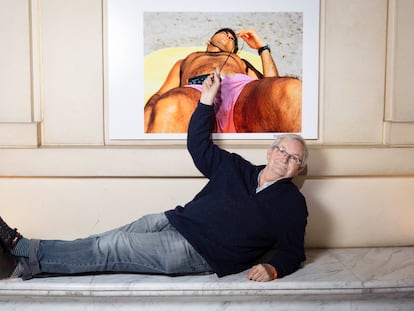Lynn Goldsmith, the photographer who shot Patti Smith like no one else: ‘She was a breath of fresh air’
New compilation ‘Before Easter After’ features portraits, many of them previously unpublished, taken of the singer in the 1970s
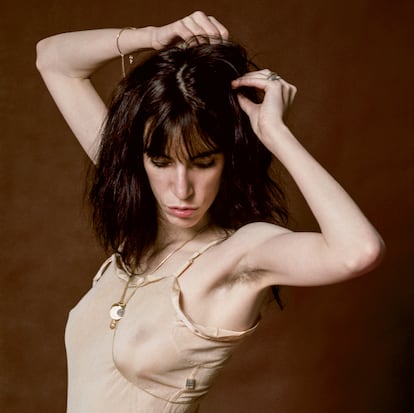
Lynn Goldsmith has worked on many projects. She was on the Elektra Records staff, directed documentaries, was the manager of rock groups, composed songs and had her own band. But she always brought her camara along. With it, she’s built a portfolio that can only be described as impressive. It contains Polaroids of politicians, writers, artists and musicians: Bruce Springsteen, Michael Jackson, Talking Heads, Marianne Faithfull, the Stones, Bob Marley and The Police. She says the camera has given her the opportunity to travel (in 1988, she published her book A Day in the Life of Spain) and to interact with people she admires. Of them, Patti Smith, who Goldsmith has known since 1975, occupies a special place.
“The people she spent time with then were also my tribe. When we see each other, I’m with a lifelong friend,” Goldsmith says. The day before our interview took place, the two had flown to Chicago to present Before Easter After (Rizzoli), a book that compiles some of the photographs that Goldsmith shot of the artist, many of them previously unpublished. “Having her in front of the lens was a breath of fresh air. At that time, many people felt uncomfortable when they had to pose. They entered the studio as if the dentist was about to pull their teeth. Patti was the exact opposite. She had grown up seeing issues of French Vogue, Italian Vogue, and that helped her see herself as a teenager. She knew how to face the camera, how to position her body.”
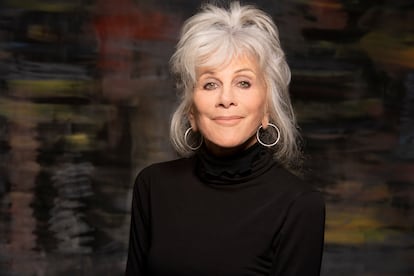
Robert Mapplethorpe shot the emblematic cover of Horses (1975), Smith’s debut album, which changed the rules of the game when it came to the image a woman could portray in the world of rock ‘n’ roll. But it’s easy to forget that Goldsmith was behind the iconic image for Easter (1978), the album that features Because the Night. Dressed in an inside-out camisole, Smith poses with her arms raised without looking at the camera, allowing it to behold her unshaved armpits. “Clive Davis [the head of the Arista label] wanted to get rid of the hair, but Patti’s contract gave her absolute control over her image. The photo was used just as I had made it. She wasn’t a conventional sex symbol. She didn’t shave her armpits or her legs and that image shows her just as she was, it didn’t hide anything. On her previous albums, she’d looked more androgynous, but Patti was very feminine, and I wanted to reflect that with this cover.”
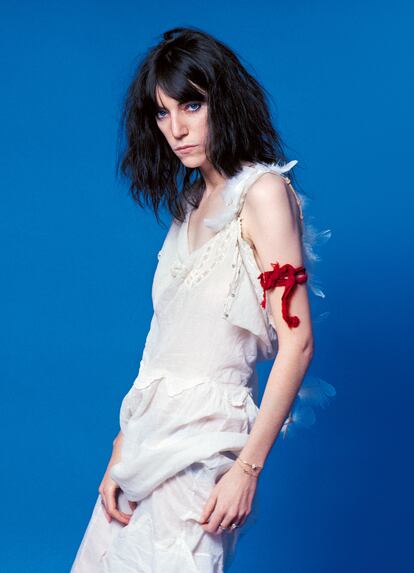
The material collected in Before Easter After largely comes from 1970s sessions, during Smith’s meteoric rise from the New York underground to rewrite the role of women in rock. The changes she brought to bear were not only aesthetic. Smith was no mere singer, she was a poet who had discovered that her declamatory style had the rhythm and passion of rock ‘n’ roll, and decided to make a fusion of the two. “Before Patti came along, there were already women playing instruments and singing, but none like her. She came along with her poetic talent, and her first record threw off the critics, who until then had only seen such a thing in [Bob] Dylan.” The second half of the 1970s belonged to Smith, until she announced in 1979 that she was retiring to start a family with the musician Fred “Sonic” Smith, with whom she lived until her sudden death in 1994.
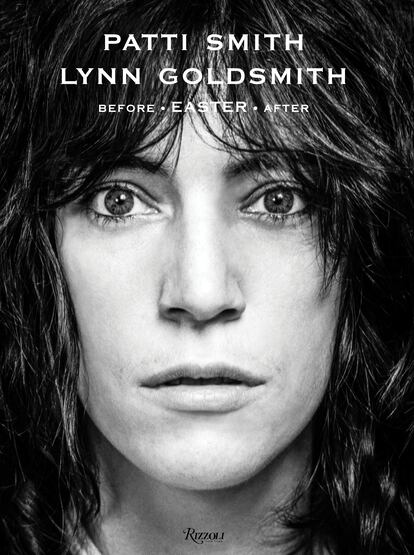
The book shows how Goldsmith knew just how to capture Smith’s magnetism. The singer in military pants, white shirt and holster, in her role as rock ‘n’ roll field marshal. Here, she is dressed in Vivienne Westwood garments gifted to her by Joe Strummer. There, with flowers in her hair and a white tunic, priestess of a pagan religion. “It was a constant creative exchange. Some images weren’t taken in order to be published, but when we sat down to choose I said, ‘look!’” Before Easter After more than fulfills one of the photographer’s basic premises: “Music helps us feel our humanity. If I’m able to bring something that enhances that connection, that’s when I feel my work has succeeded.”
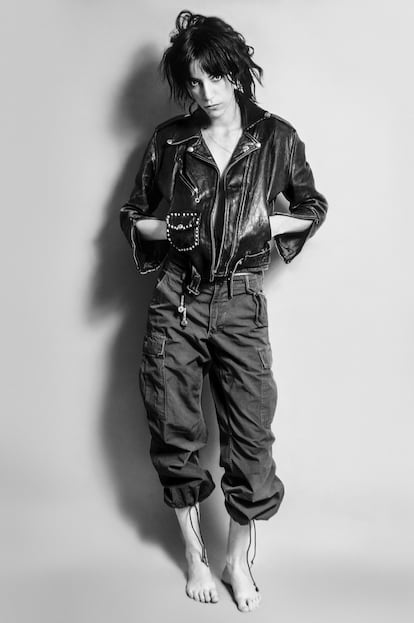
Sign up for our weekly newsletter to get more English-language news coverage from EL PAÍS USA Edition
Tu suscripción se está usando en otro dispositivo
¿Quieres añadir otro usuario a tu suscripción?
Si continúas leyendo en este dispositivo, no se podrá leer en el otro.
FlechaTu suscripción se está usando en otro dispositivo y solo puedes acceder a EL PAÍS desde un dispositivo a la vez.
Si quieres compartir tu cuenta, cambia tu suscripción a la modalidad Premium, así podrás añadir otro usuario. Cada uno accederá con su propia cuenta de email, lo que os permitirá personalizar vuestra experiencia en EL PAÍS.
¿Tienes una suscripción de empresa? Accede aquí para contratar más cuentas.
En el caso de no saber quién está usando tu cuenta, te recomendamos cambiar tu contraseña aquí.
Si decides continuar compartiendo tu cuenta, este mensaje se mostrará en tu dispositivo y en el de la otra persona que está usando tu cuenta de forma indefinida, afectando a tu experiencia de lectura. Puedes consultar aquí los términos y condiciones de la suscripción digital.
More information
Archived In
Últimas noticias
‘How does it feel to be a failure?’: Elizabeth Berkley’s journey from ‘Showgirls’ ridicule to vindication
The story of the Málaga virus: The code that haunted Google’s cybersecurity center director for 30 years
The impact of Ecuador’s mega-prison: A polluted river, cleared forests and military checkpoints
Corinne Low: ‘I’m more concerned about the female happiness gap than the gender wage gap’
Most viewed
- The low-cost creative revolution: How technology is making art accessible to everyone
- Christian Louboutin: ‘Young people don’t want to be like their parents. And if their parents wear sneakers, they’re going to look for something else’
- All the effects of gentrification in one corner of Mexico’s Colonia Roma
- Liset Menéndez de la Prida, neuroscientist: ‘It’s not normal to constantly seek pleasure; it’s important to be bored, to be calm’
- Christmas loses its festive spirit: ICE fears cast shadow over religious celebrations
